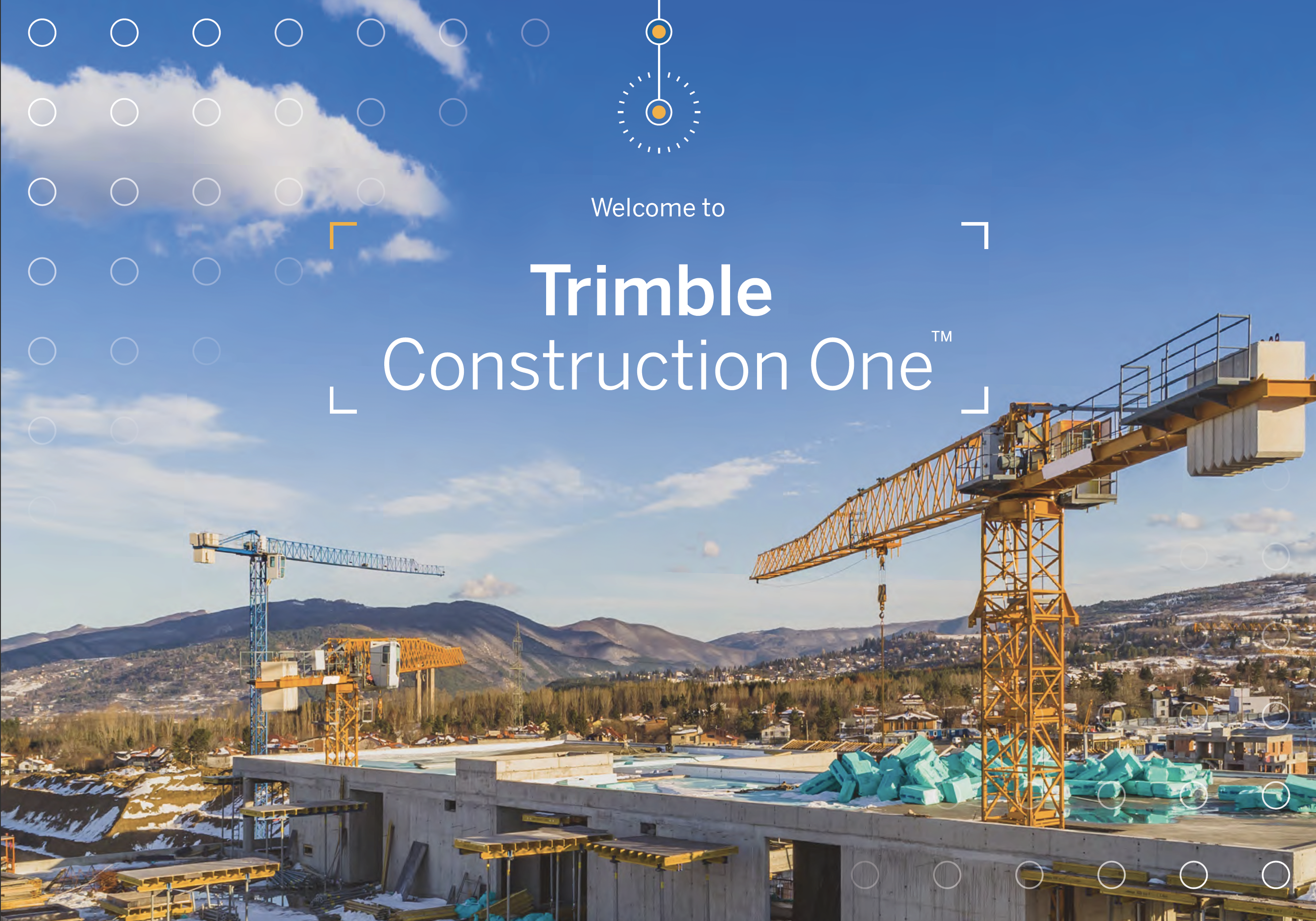A Guide to Getting Construction Requests For Information (RFIs) Right
0%
Construction projects are complex undertakings involving multiple stakeholders, evolving schedules and myriad construction documents. With so many moving parts, collaboration is essential, making requests for information (RFIs) a critical part of the process.
While essential, if not managed correctly, RFIs in construction can cause unnecessary delays and drive up costs. Relatively quick projects that last one year or less still see an average of 270 RFIs, while those that last five years see more than 1,400 on average. As issues arise and additional information is needed to address them, a streamlined RFI process ensures smooth and timely project completion. This article examines the importance of RFIs and best practices for submitting, drafting and answering RFIs in construction.
What is an RFI in Construction?

An RFI is a Request For Information. RFIs can be used at any point during the bidding or construction process when something is not clear.
A request for information is used by one of the parties involved in a construction project to ask for additional information or clarification regarding a document, like contracts, project plans or specifications. It’s a key part of construction management. Construction documents are detailed and complex and there will inevitably be errors, gaps and ambiguities. The goal of the RFI process is to keep all parties on the same page during each phase of the construction project.
An RFI is a formal process that any of the parties involved can initiate. For example, a designer could request more information from the client, or a contractor might address a question to the designer. Subcontractors typically submit the lion’s share of RFIs. They can be used by contractors or clients and are usually submitted to the designated person at each company. RFIs are submitted in writing, and the response is provided in writing too.
Handling RFIs can be time-consuming, but they’re a necessary part of any construction project. Used correctly, RFIs ensure that all stakeholders have the information they need to help keep the project on time and avoid costly mistakes.
Why Use an RFI?

Anyone involved in construction knows that no project ever runs exactly as planned, and normal communication channels aren’t always sufficient. When issues and questions arise, RFIs can serve as a valuable tool to prevent costly misunderstandings and keep the project moving forward. Some of the most common reasons behind RFIs include:
- A lack of critical information in the construction documentation
- Concerns about the quality or misapplication of resources
- Recommendations for substitutions or modifications of materials
- Changes to the timing or phasing of a project due to resource or labor constraints
However, an RFI isn’t the answer to every problem that arises during a construction project. RFIs can easily slow the project down, so they should not be used for routine communication like progress reports or general commentary on the building process. Nor should they be used to place blame on other parties for lack of information or delays.
While the costs of the RFI process can add up quickly, this concern should not deter a subcontractor or other stakeholder from submitting an RFI when warranted. But before moving forward, read through all the documents you have access to thoroughly to ensure the answer isn’t already available.
Used haphazardly, an RFI creates conflict that only serves to slow and undermine a project. But when used properly, RFIs support a collaborative atmosphere that contributes to quality work and customer satisfaction.
What is an RFI and submittals?
An RFI and submittals is a term that describes a request for information and the documents that accompany it. Sometimes, this might be a drawing of a proposed change, or it could be photographs from the site that illustrate the subject of the RFI. These submittals help the project team to identify and confirm that there is a problem and to formulate the correct answer or solution.
Do RFIs change contract documents?
On their own, RFIs do not change contract documents. However, after an RFI is submitted, the client or their representative can issue a change order or directive that will change the contract. Construction companies should wait until an official change order is issued before making any changes to their work.
Types of construction RFIs
Several types of construction RFIs might be used for different situations. These include material changes, method changes, site conditions, timing or phasing, design-related, construction coordination-related, or where there is a utility conflict. RFIs should be used whenever anything is not clear or when there is a conflict between the contract documents and the actual situation on site.
Why are construction RFIs important?
In the construction world, if it’s not written down, it does not exist. This means that even if you have asked a question in person until it is formalized in writing, no action can or should be taken. RFIs answer important questions about projects and often lead to other important construction documents and processes.

The RFI Process in Construction
All construction RFIs follow the same general process:
- Submitting,
- Reviewing and
- Responding
Submitting
The RFI process begins with a stakeholder, often a subcontractor, drafting and submitting a document with a question that they need addressed. The submission might include visuals and may also suggest options for resolving the problem.
Reviewing
The RFI is then sent to the appropriate party — typically the general contractor, when submitted by a subcontractor — who will then review it and decide whether to edit, approve or reject it. A rejected RFI is simply returned to the submitting party with an explanation. Alternatively, the receiving party can edit it if required, approve it and pass it on to other parties as needed, like the project manager or architect. These additional parties can then review the RFI and send it to yet others for input. In this way, all parties involved in the project are made aware of the issue and have an opportunity to comment.
Responding
The response to the RFI is coordinated by the project manager or architect. As the reply may impact the timing, budget and overall scope of the project, the response must be crafted at the project manager level and then communicated back to all parties including the general contractor and subcontractors. Once the RFI is answered, the recommended solution is documented and becomes part of the permanent record of the construction project.
What to Include in an RFI

Here’s a checklist of elements to include in your RFI:
- Provide the name of the project and the address (if applicable).
- Include the number of the RFI, the RFI title and the date.
- Make a note of any attachments (plans, drawings, invoices, etc.).
- Provide an overview of the issue and reference the relevant specification or drawing.
- If necessary, include a section to suggest a solution and describe changes in cost or construction.
- Leave space for the response and include an expected response date.
- Include contact information for both the recipient and the requesting party (name, title, company, etc.).
- Use a quality RFI template for consistency, like the image example from Trimble Construction One
Draft your RFI in a precise way that facilitates communication and makes it easy for the receiving parties to answer it as quickly as possible. The average nonresponse rates for RFIs vary by region from less than 19% to 35%, so making your request as clear as possible is a must. Begin by stating the question clearly and concisely. Avoid industry jargon as much as possible, and provide context to clarify the issue. Consider recommending a solution and include images to support the content when appropriate.

Best Practices for Using RFIs
When an RFI is needed, follow these four best practices to keep the process efficient and productive.
1. Address the RFI Process in Advance and in Writing
At the outset of the project, clarify the RFI process to all parties involved. Contracts should outline the specifications regarding RFIs, including when to submit them, the format to use and the timeframe for responding. Communicating the specifics up front will prevent missteps down the road.
2. Submit RFIs as Soon as Possible
Consider involving subcontractors during the design phase of the construction project and encourage them to submit RFIs early in the process. Traditional projects are very linear, with the planning phases largely completed before the subcontractors get involved. This siloed process can lead to a barrage of RFIs from subcontractors. Involving them early in the process allows issues to be addressed in the design phase and avoids costly delays during the construction phase.
3. Be Clear when Drafting and Answering RFIs
Clear communication is the core of the RFI process. When drafting an RFI, begin by stating the question that needs to be addressed. Be direct and make it clear to the designer, engineer or other stakeholders exactly what you need. After stating the question, add some context to aid in comprehension, keeping the language understandable, concise and free of jargon that others may not understand.
Similarly, an RFI response should be timely and to the point. If the response does not answer the question that was presented, the stakeholder who submitted the RFI should request a meeting or arrange a phone call to discuss the issue. This allows both parties to clear up any confusion and avoid delays caused by lengthy back-and-forth written communication. While a verbal directive will help to resolve the issue and move the project forward, it should also be documented in the RFI response. The RFI serves as an important record for the project and may be referenced if further issues arise.
4. Use Construction Management Software to Automate, Document and Track RFIs
Without a good project management solution in place, documenting and tracking RFIs is a tedious and time-consuming process. The RFI is created in a text document and then logged into a spreadsheet. From there, communications and approvals are generally completed via email. This is a laborious system that lacks standardization, isn’t transparent and is prone to errors. It’s no surprise that the first reply to an RFI takes almost a week on average across projects globally.
An integrated, cloud-based management system allows all stakeholders to track the RFI from the moment it’s submitted until the answer is received. It stores all relevant information and associated communication in a central location accessible by anyone on the team, whether they’re in the office, in the field or even deep underground. An RFI platform also standardizes formatting, making it easier to both submit and respond to RFIs.
Streamline the RFI Process

Trimble Construction One is an integrated construction management solution that streamlines the RFI process. Contractors and subcontractors can access and complete RFIs from their computer, tablet or smartphone.
From there, Trimble Construction One distributes it to other stakeholders involved, with alerts when information is needed. And when an answer is submitted, all parties have access to the response, eliminating future questions and attendant delays caused by traditional RFI channels. Trimble Construction One also creates a complete audit trail of RFIs and a thorough project record so that all parties have access to information whenever they need it.
Streamlined RFI management is just one project collaboration tool in Trimble Construction One. Contact us today to learn more.




